Today I’m sharing how to kill mosquito larvae with “Buckets of Doom” so you can enjoy your outdoor space this summer!
I am a mosquito magnet. They love me. If there’s even one mosquito in the yard, I am guaranteed to get annihilated. Since we love to spend lots of time outside during the summer I have tried just about every type of mosquito repellent gadget, spray, sticker, and candle to protect me from those little devils. However, killing mosquito larvae is one of the most effective ways we’ve found to combat mosquitoes.
So to prepare for mosquito season, I made my own Mosquito Buckets of Doom. You can usually purchase these through your mosquito or pest control company, but you can also doom-them-yourself for a fraction of the cost. (Sorry, couldn’t resist a good pun!)
Find my video tutorial HERE!
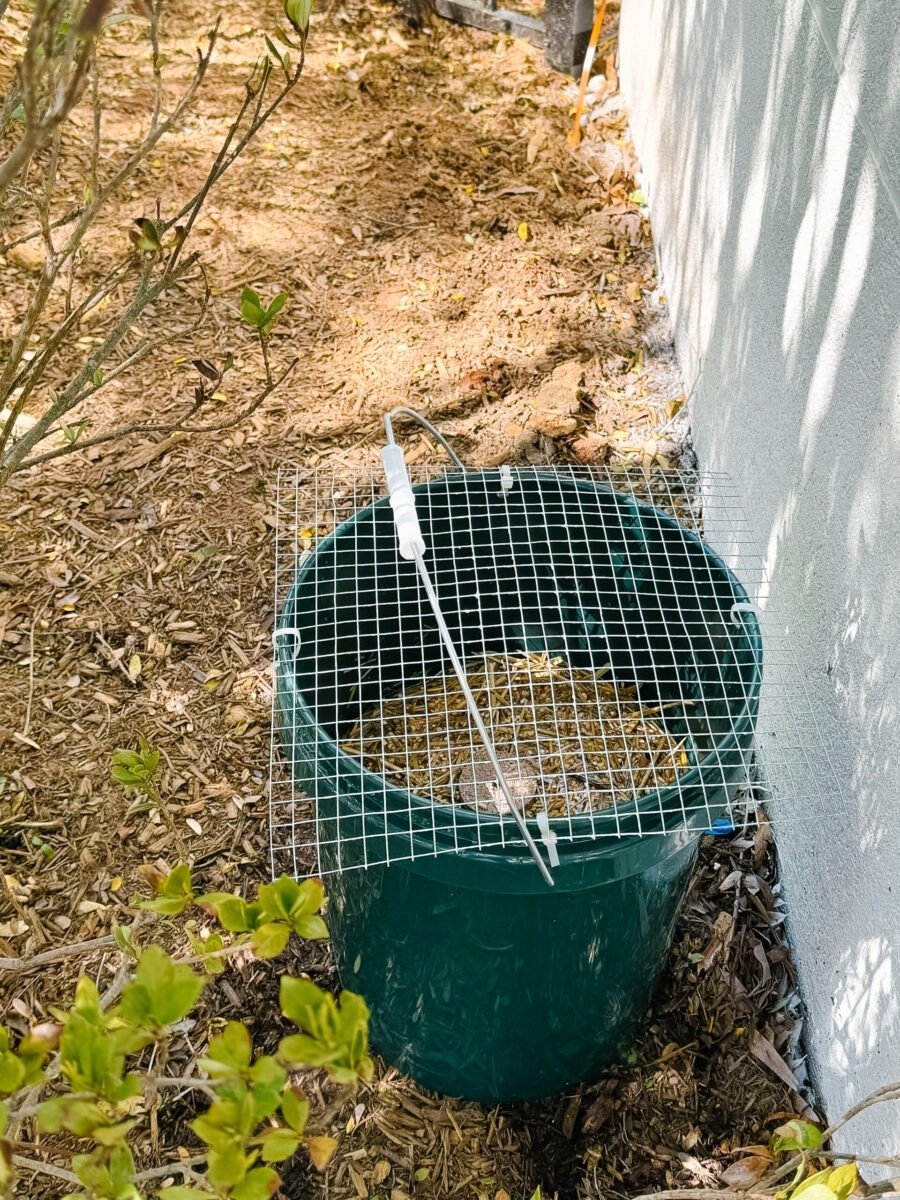
Why We Love Mosquito Buckets of Doom
- A safe alternative to pesticide sprays that protects the insects you don’t want to kill like fireflies, butterflies, ladybugs, bees, etc. It is also safe for your pets.
- Inexpensive and easy to make at home with just a few supplies — a bucket of water, a handful of leaves and a mosquito dunk/bits.
- They are EFFECTIVE!
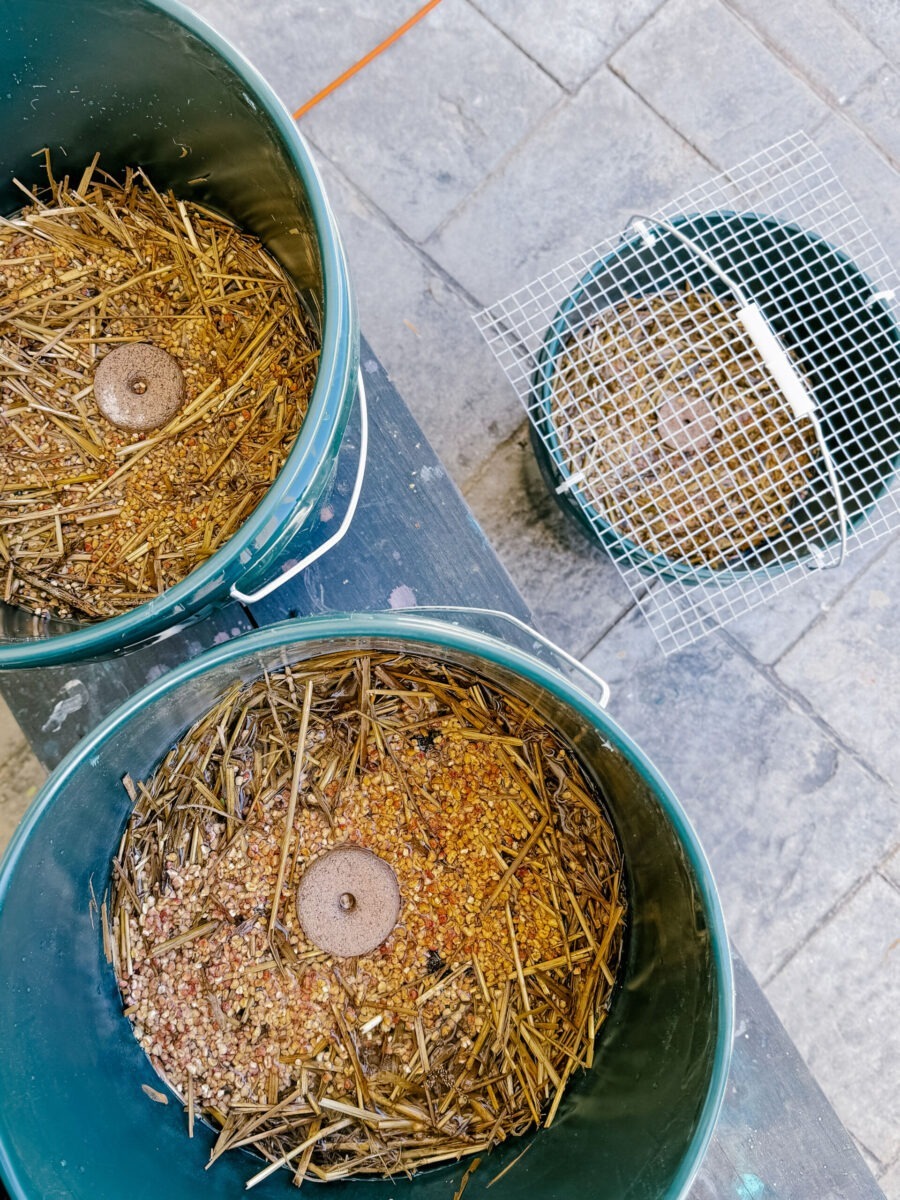
How To Kill Mosquito Larvae with Buckets of Doom
These eco-friendly traps prevent mosquitoes from breeding in your yard. As the straw/grass/leaf litter begins to rot inside the bucket, the “stew” becomes a highly attractive nesting ground for mosquitoes ready to lay eggs. Once the eggs are laid, they will hatch within a few days and the mosquito dunk kills them, preventing no new mosquitoes.
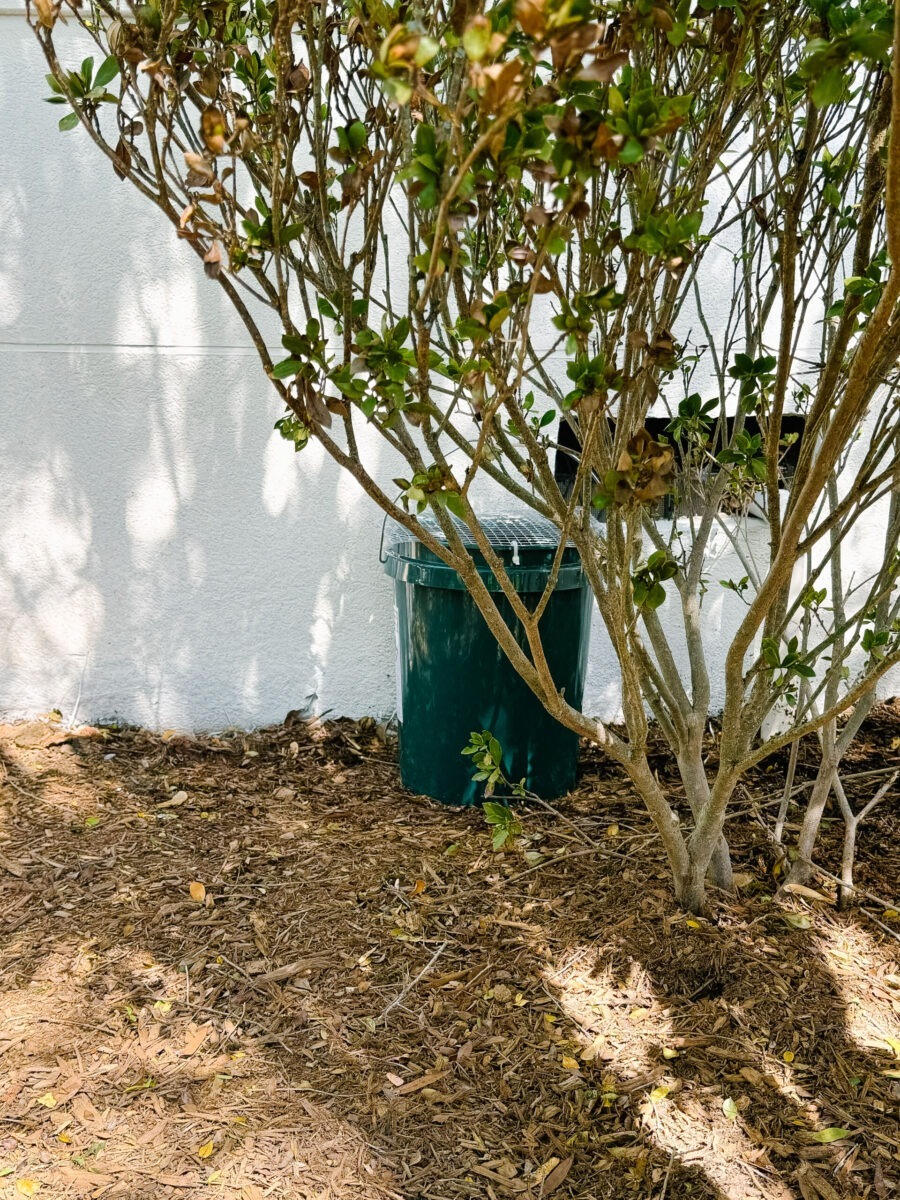
Mosquito Buckets of Doom Supplies
- 5 Gallon Bucket: Depending on how big your yard is, you may want to make several mosquito buckets for a larger mosquito-free area. I prefer the green color buckets so I can camouflage them in the yard. If you can’t hide the bucket, you can drop it inside a large planter or any container with a wide mouth for a more discreet look.
- Yard Clippings: These can be grass clippings, leaf litter, hay, or straw.
- Mosquito Dunks: Organic donut-shaped disks that contain Bti, a bacterium that occurs naturally in soil and is toxic only to mosquito larvae (and fungus gnat larvae), and are non-toxic to wildlife, pets, fish, and humans. A dunk lasts for 30 days and treats 100 square feet of water, so you can use any leftover dunks in standing water around your yard including rain barrels, bird baths, rain gutters, etc.
- Mosquito Bits: Even though the dunk is sufficient, I like to add a layer of mosquito bits to my stew to make it extra strong. I also sprinkle these bits around my yard where standing water likes to collect after it rains. Mosquitoes only need 1/4 inch of standing water to lay eggs.
- Plastic Wire + Zip Ties (Optional): While the dunks are safe for insects and animals, you can cover your buckets with a plastic wire lid to keep curious animals (pets, birds, squirrels, etc.) and kids out of the bucket. Just drill a few holes around the bucket and attach with zip ties.
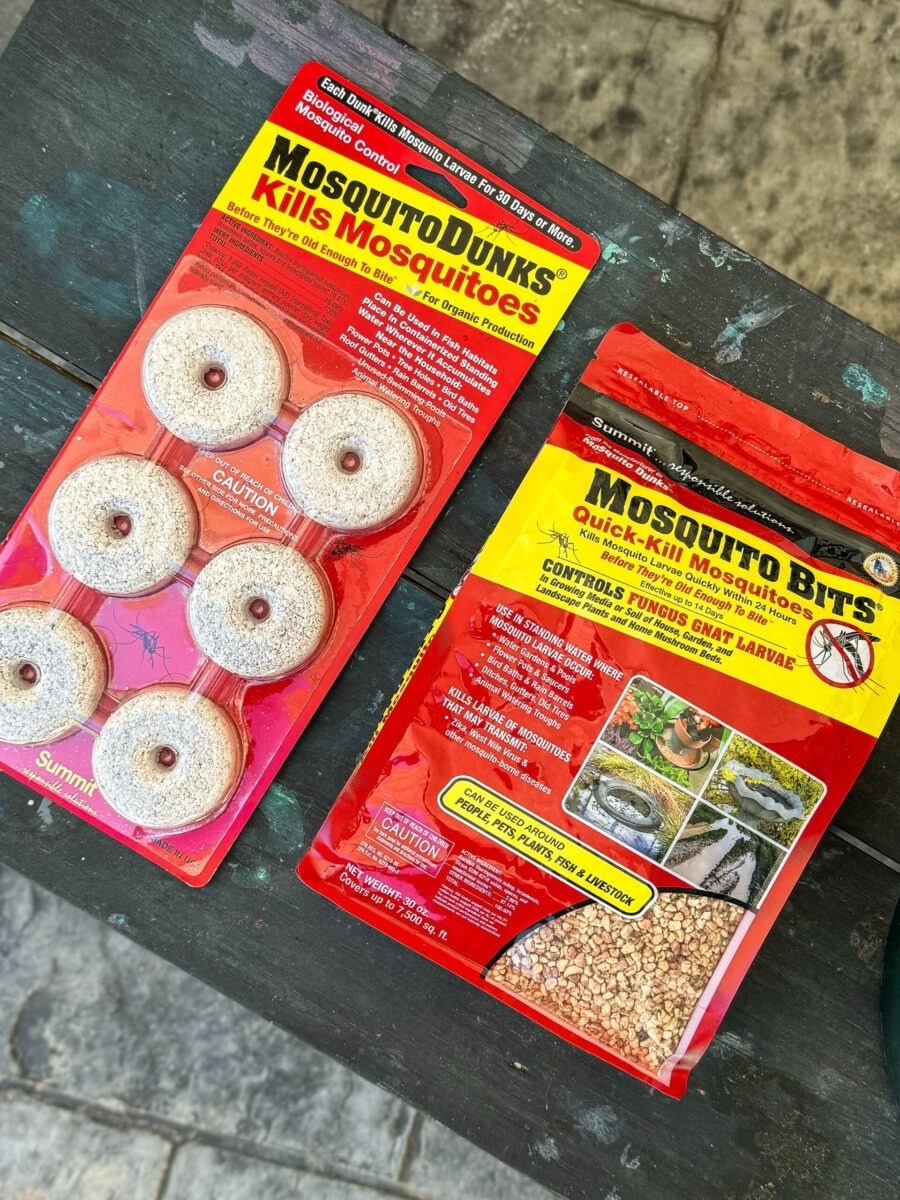
How To Make Mosquito Buckets of Doom
Step 1: Fill your bucket halfway with water. Then add a few handfuls of grass clippings, straw, leaf litter, yard debris, etc. As the organic matter begins to rot, it will produce carbon dioxide which attracts mosquitoes ready to lay eggs.
Tip: If you’re adding a wire cover, make sure to drill your holes before you fill with water.
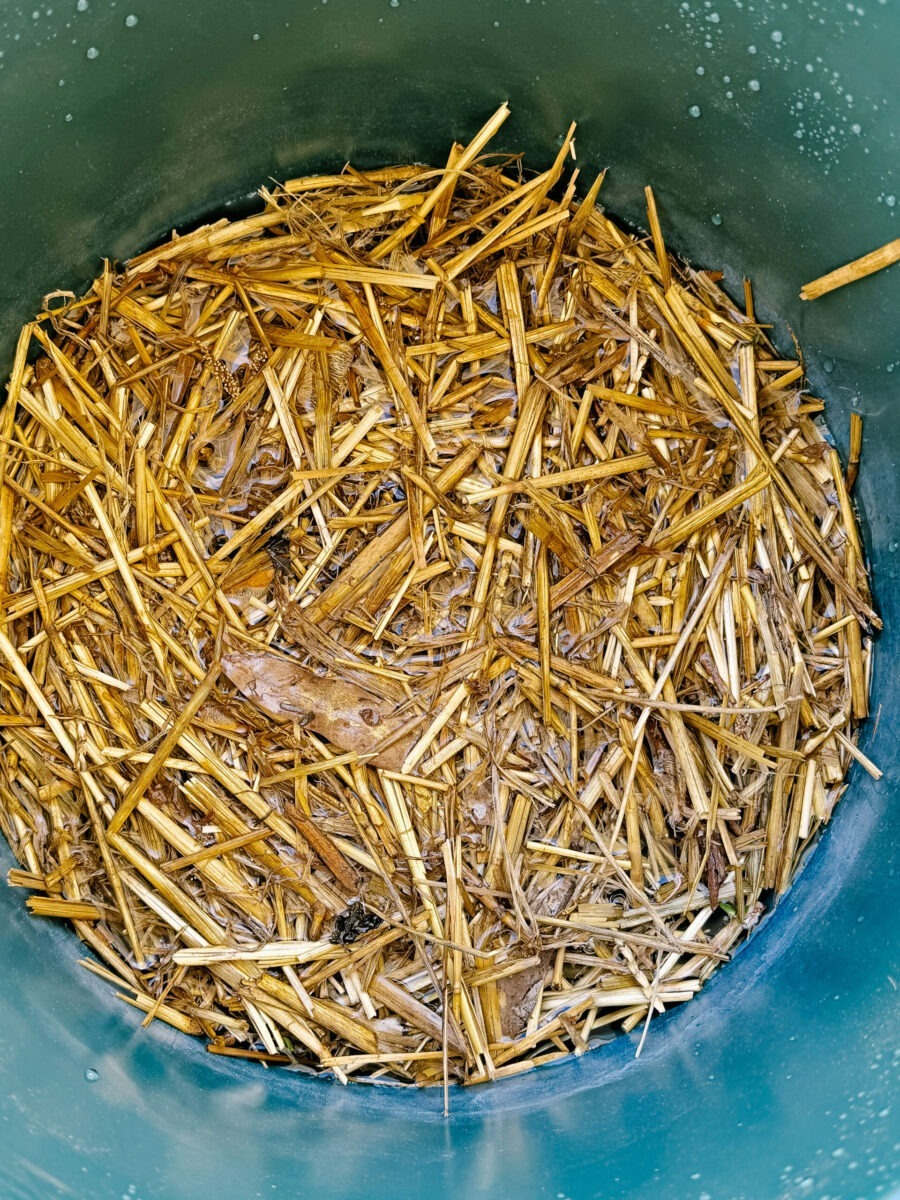
Step 2: Add a layer of mosquito bits and top with a mosquito dunk. You will need to pour in more bits and add a new dunk every 30 days.
Tip: I like to write the date on the back of the mosquito dunk package so I know when I last added a new dunk.
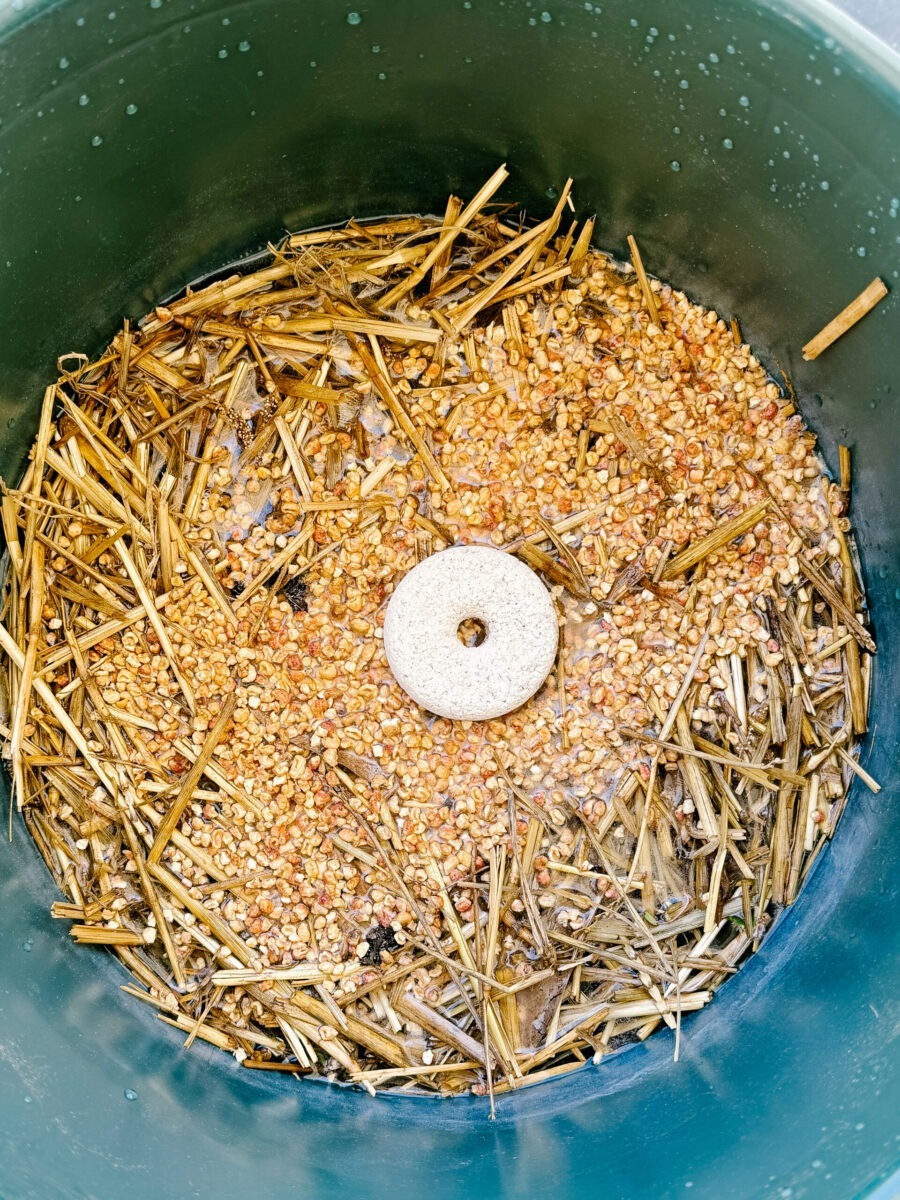
Step 3: While the dunks are safe for insects and animals, you can cover your buckets with plastic wire or a similar screening to keep curious animals (pets, birds, squirrels, etc.) and kids out of the bucket. Just drill a few holes around the bucket and attach with zip ties.
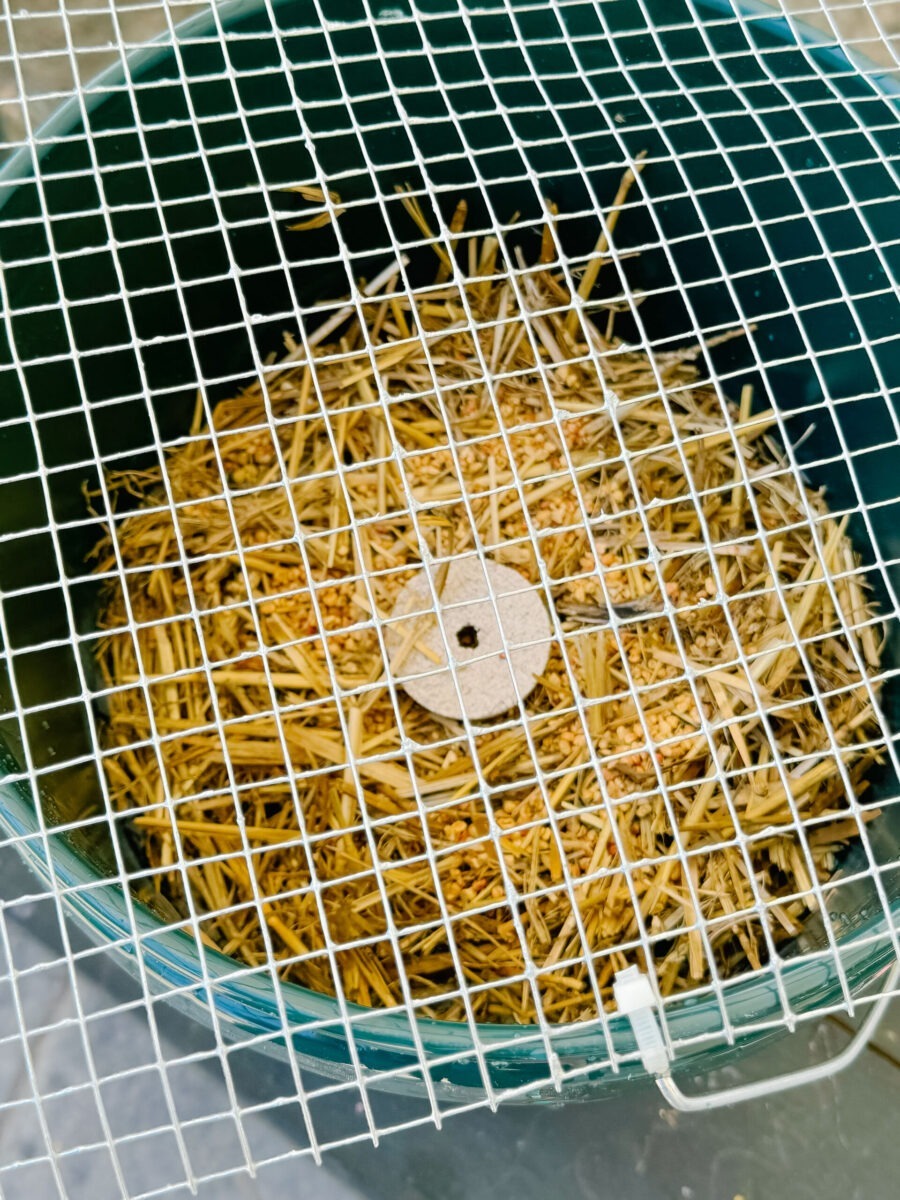
Step 4: Place your buckets in areas around your yard where mosquitoes like to hang out, ideally in a shaded area.
Note: You do not need to change the water in the bucket. However, if the water evaporates below the halfway mark, you can add more water to it.

Prefer printable instructions? See below!
How To Kill Mosquito Larvae (Buckets of Doom)
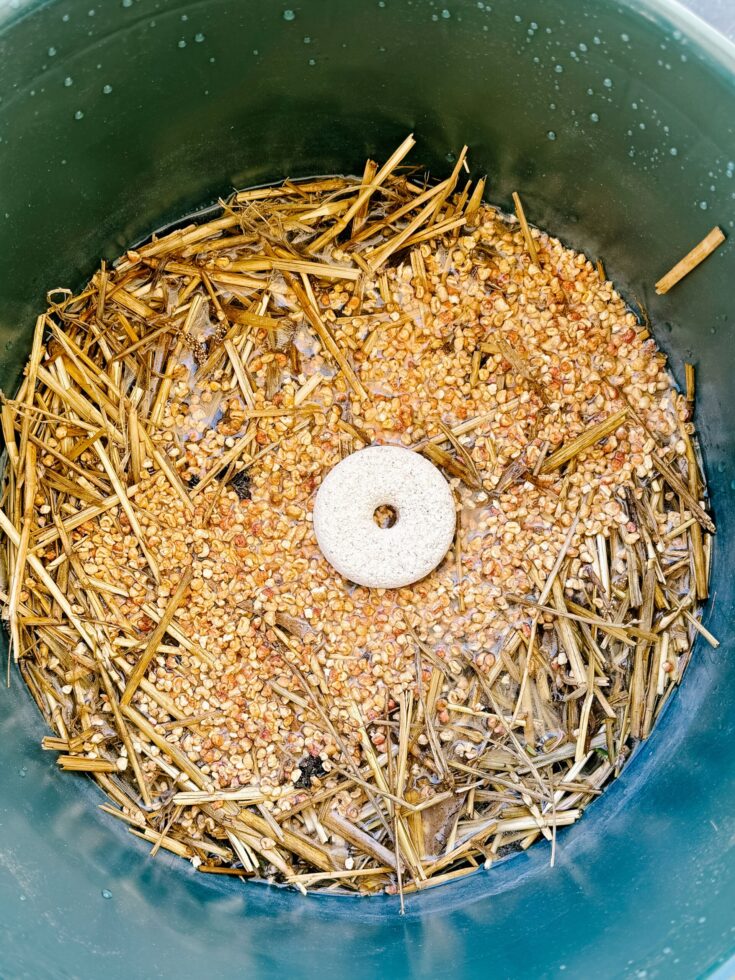
An eco-friendly, inexpensive, and effective way to eliminate mosquitoes from your yard!
Materials
- 5 Gallon Bucket: Depending on how big your yard is, you may want to make several mosquito buckets for a larger mosquito-free area. I prefer the green color buckets so I can camouflage them in the yard. If you can’t hide the bucket, you can drop it inside a large planter or any container with a wide mouth for a more discreet look.
- Yard Clippings: These can be grass clippings, leaf litter, hay, or straw.
- Mosquito Dunks: Organic donut-shaped disks that contain Bti, a bacterium that occurs naturally in soil and is toxic only to mosquito larvae (and fungus gnat larvae), and are non-toxic to wildlife, pets, fish, and humans. A dunk lasts for 30 days and treats 100 square feet of water, so you can use any leftover dunks in standing water around your yard including rain barrels, bird baths, rain gutters, etc.
- Mosquito Bits: Even though the dunk is sufficient, I like to add a layer of mosquito bits to my stew to make it extra strong. I also sprinkle these bits around my yard where standing water likes to collect after it rains. Mosquitoes only need 1/4 inch of standing water to lay eggs.
- Plastic Wire + Zip Ties (Optional): While the dunks are safe for insects and animals, you can cover your buckets with a plastic wire lid to keep curious animals (pets, birds, squirrels, etc.) and kids out of the bucket. Just drill a few holes around the bucket and attach with zip ties.
Instructions
Step 1: Fill your bucket halfway with water. Then add a few handfuls of grass clippings, straw, leaf litter, yard debris, etc. As the organic matter begins to rot, it will produce carbon dioxide which attracts mosquitoes ready to lay eggs.
Tip: If you’re adding a wire cover, make sure to drill your holes before you fill with water.
Step 2: Add a layer of mosquito bits and top with a mosquito dunk. You will need to pour in more bits and add a new dunk every 30 days.
Tip: I like to write the date on the back of the mosquito dunk package so I know when I last added a new dunk.
Step 3: While the dunks are safe for insects and animals, you can cover your buckets with plastic wire or a similar screening to keep curious animals (pets, birds, squirrels, etc.) and kids out of the bucket. Just drill a few holes around the bucket and attach with zip ties.
Step 4: Place your buckets in areas around your yard where mosquitoes like to hang out, ideally in a shaded area.
Note: You do not need to change the water in the bucket. However, if the water evaporates below the halfway mark, you can add more water to it.
Good luck Dooming-It-Yourself!
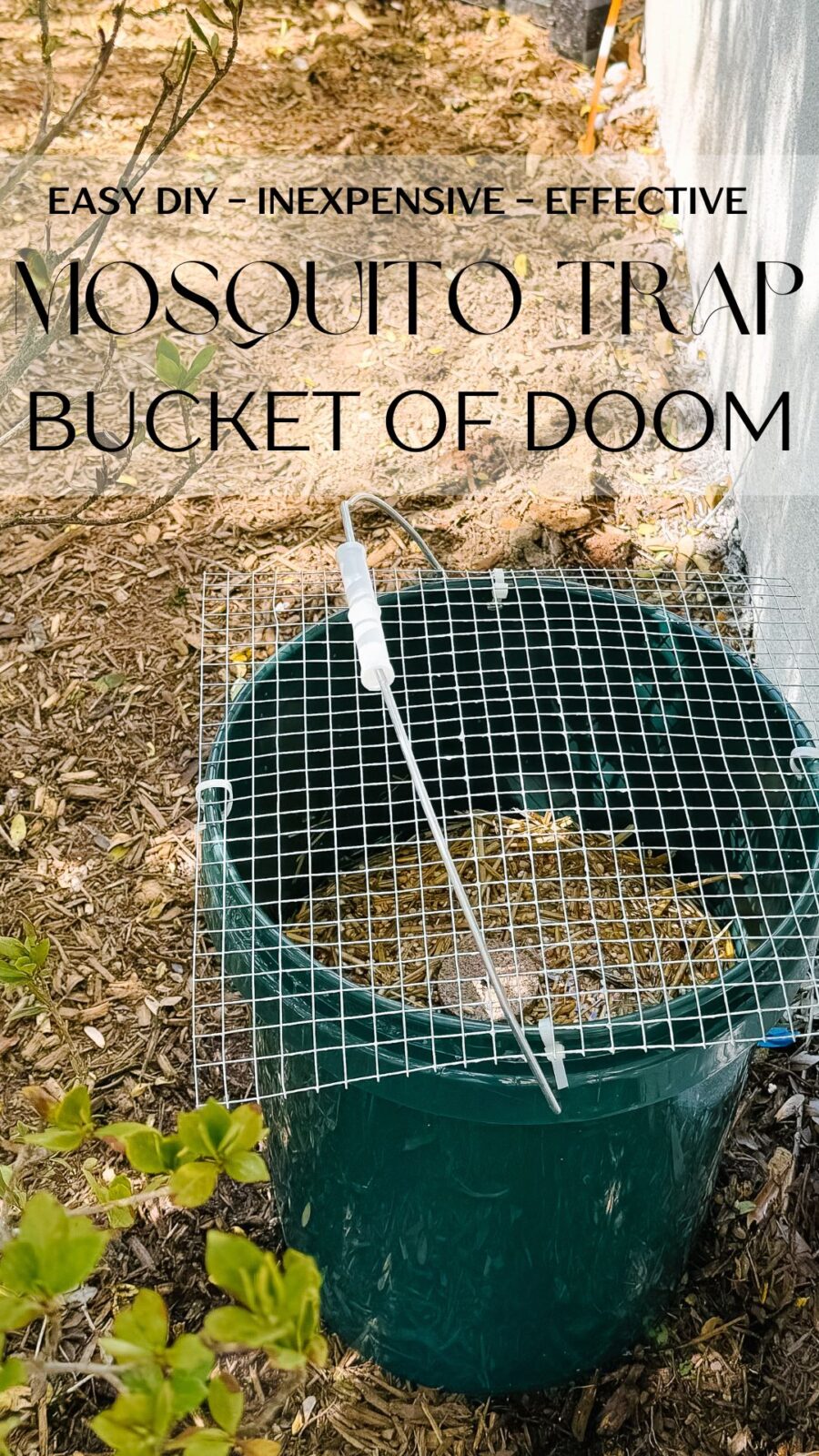

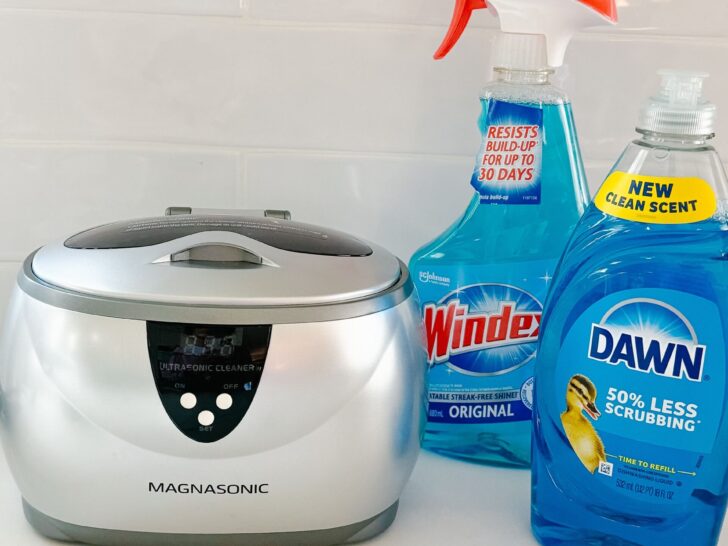
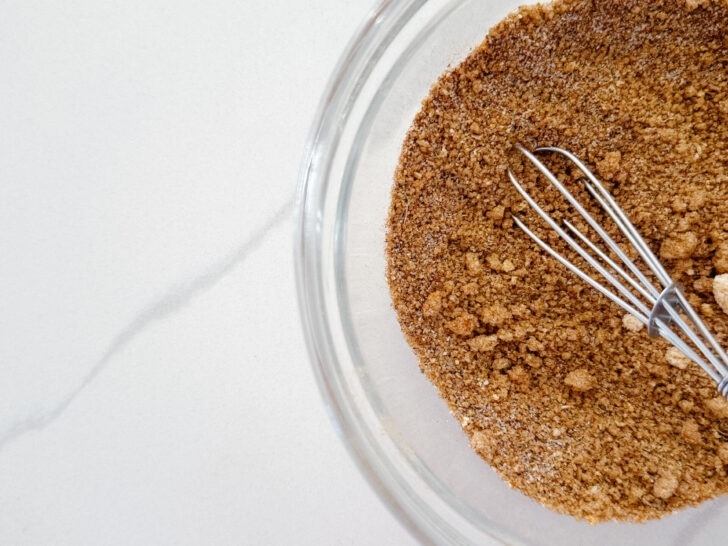

Sofia Mattos
Tuesday 23rd of April 2024
Hi! I setup 3 of these - thank you for the “recipe”. How much distance to where we hang out should these be placed? Also how long until I start feeling a bit of relief?
Toni :0)
Wednesday 10th of April 2024
So fascinating!!! Had no idea this was a thing!! Let us know how it works out.